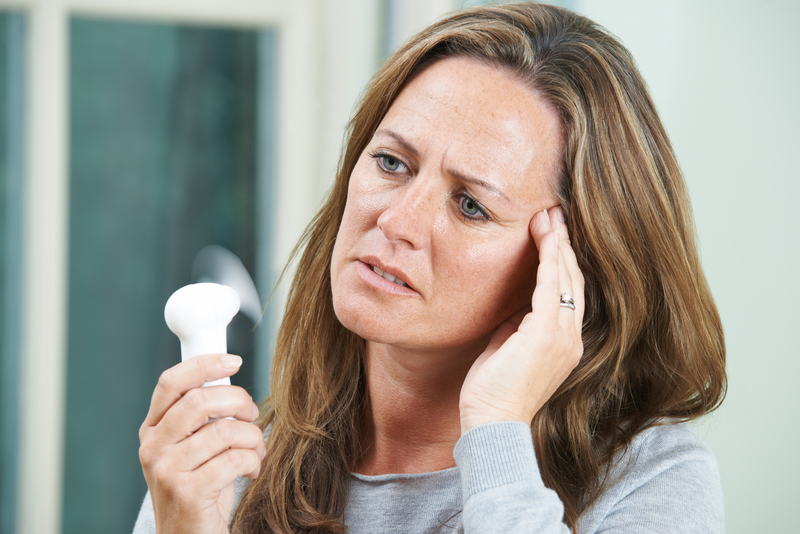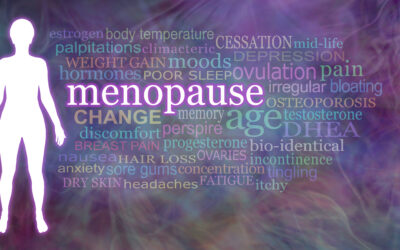Is it Peri-Menopause or Menopause? How to Know…
Navigating the complex world of women’s health can be akin to piloting a labyrinth. From deciphering what our bodies are telling us to trying to keep up with medical jargon, the journey can be overwhelming. One topic that often confounds many women as they age is the transition into menopause – is it peri-menopause or actual menopause?
In this article, we’ll embark on a journey, navigating the often confusing corridors of female hormonal changes. We’ll explore the differences between peri-menopause and menopause, look at their symptoms, and learn how to understand what phase we might be in. Buckle up – this is going to be an enlightening ride!
Understanding the Menopause Spectrum:
The term “menopause” is often used as a blanket term to cover a spectrum of changes women experience as they age. However, it’s crucial to understand that this spectrum is divided into three stages: peri-menopause, menopause, and post-menopause.
Peri-menopause refers to the years leading up to menopause when the levels of estrogen produced by the ovaries start fluctuating and gradually declining.
Menopause, on the other hand, marks the end of a woman’s menstrual cycles. It’s officially diagnosed after you’ve gone 12 months without a menstrual period and often occurs in the late 40s or early 50s.
Post-menopause refers to the years following menopause.
Timelines: Peri-menopause and Beyond
One frequently asked question about peri-menopause and menopause is related to the timeline: How long should you expect these symptoms to last? When do these symptoms suggest you’re moving from normal hormonal fluctuations into peri-menopause?

Peri-menopause, on average, begins around the mid to late 40s but can start earlier for some women. The duration of peri-menopause varies greatly for each woman and can range from a few years to over a decade. One study found that peri-menopause lasts an average of 4 years, but for about 1 in 10 women, it can last more than 8 years.
During peri-menopause, you may start to notice irregularities in your menstrual cycle. The period between each cycle might shorten, particularly in the first 1 to 2 years. For instance, you might find your cycle shortening from the usual 28 days to a 24-day cycle, or you may experience skipping periods altogether.
Hot flashes, one of the most commonly reported symptoms of peri-menopause, can begin during this time. For some women, they last for a short period, while others might experience them for the entire duration of peri-menopause and beyond. An estimated 10-20% of women experience hot flashes for more than ten years.
Another important sign that you’re moving from normal hormonal fluctuations into peri-menopause is an increase in the severity of premenstrual syndrome (PMS). You might experience mood swings, bloating, and breast tenderness more than you did in your younger years.
As you get closer to menopause, the frequency of your periods might become even more unpredictable. You may miss several periods only to have them start again. At this point, the levels of estrogen in your body drop significantly, causing symptoms like vaginal dryness and sleep disturbances to become more pronounced.
Once you’ve gone for 12 consecutive months without a menstrual period, you’ve officially reached menopause. However, this doesn’t mean the end of symptoms. Hot flashes, sleep problems, and other menopause symptoms can continue for several years. The severity and duration of these symptoms are highly individual and can be influenced by factors such as overall health, stress levels, and lifestyle.
In conclusion, understanding the timeline of peri-menopause and menopause can help set realistic expectations and better manage this transition. If you find your symptoms are significantly affecting your quality of life, it’s essential to reach out to a healthcare provider. Various treatments and lifestyle modifications can significantly improve these symptoms and your overall wellbeing.
Decoding the Symptoms:
One of the first steps in distinguishing between peri-menopause and menopause is understanding the different symptoms.
During peri-menopause, one of the first changes you may notice is the irregularity of your periods. This can be sporadic – you may miss periods in some months and have them regularly in others. The flow may vary too, ranging from very light to extremely heavy, and you may have spotting between periods. Mood swings, akin to premenstrual syndrome, can become more pronounced due to the hormone fluctuations.

Hot flashes and night sweats are common, creating a sudden feeling of warmth that spreads over the upper body. These are linked to the decreasing levels of estrogen and can vary in frequency and intensity. Sleep disturbances often accompany these hot flashes, leading to insomnia or unrefreshful sleep.
You might also notice physical changes like dry skin and eyes, an increase in abdominal fat, and loss of breast fullness. Vaginal dryness is another typical symptom, which might make intercourse uncomfortable. Urinary issues, such as incontinence or increased frequency of urination, might occur due to changes in the urinary tract.
When it comes to menopause, the symptoms might seem familiar, but the experience changes since menstrual periods stop completely. Hot flashes and night sweats might continue or intensify. Mood changes, sleep disturbances, and issues related to vaginal dryness and urinary health persist. Memory problems or ‘brain fog’ might also be a symptom for some women during menopause.
Medical Investigations:
If you’re finding it challenging to distinguish between peri-menopause and menopause based on symptoms alone, don’t worry – you’re not alone. A healthcare provider can help pinpoint your stage through a couple of tests.
During peri-menopause, testing the levels of Follicle Stimulating Hormone (FSH) in your blood can be useful. As the ovaries start to produce less estrogen, the pituitary gland compensates by releasing more FSH, leading to higher levels in your bloodstream.
However, because hormone levels fluctuate widely during peri-menopause, this test might need to be repeated several times for a definitive diagnosis.
When it comes to diagnosing menopause, however, there isn’t a specific “menopause test”. The gold standard remains going for 12 months without a period. But in some instances, your doctor may still order FSH and estradiol tests, as consistently high levels of FSH and low levels of estradiol are indicative of menopause.

Adapting to the Changes:
Adjusting to the hormonal changes can take time, but there are numerous strategies to manage these transitions better. A healthy lifestyle can greatly alleviate peri-menopause and menopause symptoms.
Diet: Eating a balanced diet can manage weight gain, maintain bone health, and stabilize mood swings. Phytoestrogens, found in foods like soy and flaxseeds, have estrogen-like effects and can ease symptoms like hot flashes and night sweats.
Exercise: Regular physical activity can help to reduce hot flashes, improve sleep, regulate mood, and maintain bone density. Weight-bearing exercises are particularly beneficial for bone health.
Sleep: Good sleep hygiene can combat insomnia associated with peri-menopause and menopause. Keep your bedroom cool to mitigate hot flashes and night sweats. Maintain a regular sleep schedule and avoid stimulating substances like caffeine and alcohol close to bedtime.
Stress Management: Techniques like yoga, meditation, and deep breathing exercises can alleviate stress and anxiety associated with hormonal changes.
Medical Treatments: In some cases, hormone replacement therapy (HRT) or low-dose antidepressants may be recommended by your healthcare provider. Always discuss potential side effects and risks with your doctor.
Supplements: Certain vitamins and supplements are known to help manage menopause symptoms. Vitamin E may help reduce hot flashes, and St. John’s Wort can potentially alleviate mild depression and mood swings. Black Cohosh and Evening Primrose Oil are widely used for hot flashes, though their effectiveness varies among individuals.
Phytoestrogen supplements, derived from plants like red clover, can also help balance hormones. However, these should be used with caution, especially if you have a history of hormone-sensitive cancers.
Bone health can be improved with regular intake of calcium and vitamin D. Calcium is necessary to maintain bone strength, and vitamin D aids calcium absorption. The recommended daily intake for women over 50 is 1200 mg of calcium and 600 IU of vitamin D.
Finally, a well-rounded B complex vitamin can help with energy, mood regulation, and overall nerve function.
Remember, before beginning any new supplement regimen, consult with a healthcare provider to ensure it’s safe and suitable for your specific needs.

Understanding the differences between peri-menopause and menopause is key to navigating this phase of life. By learning to recognize the symptoms and seeking help when necessary, you can effectively manage these changes and continue to enjoy a healthy and vibrant life.
Remember, every woman’s journey through peri-menopause and menopause is unique. Don’t compare your experiences to those of others, but rather, embrace this period as a natural progression in your life. Here’s to empowering ourselves and others through knowledge and understanding – one hormone at a time!
As you traverse this labyrinth of women’s health, may you always feel armed with the best of information and utmost confidence. Don’t just survive these changes – thrive through them!



